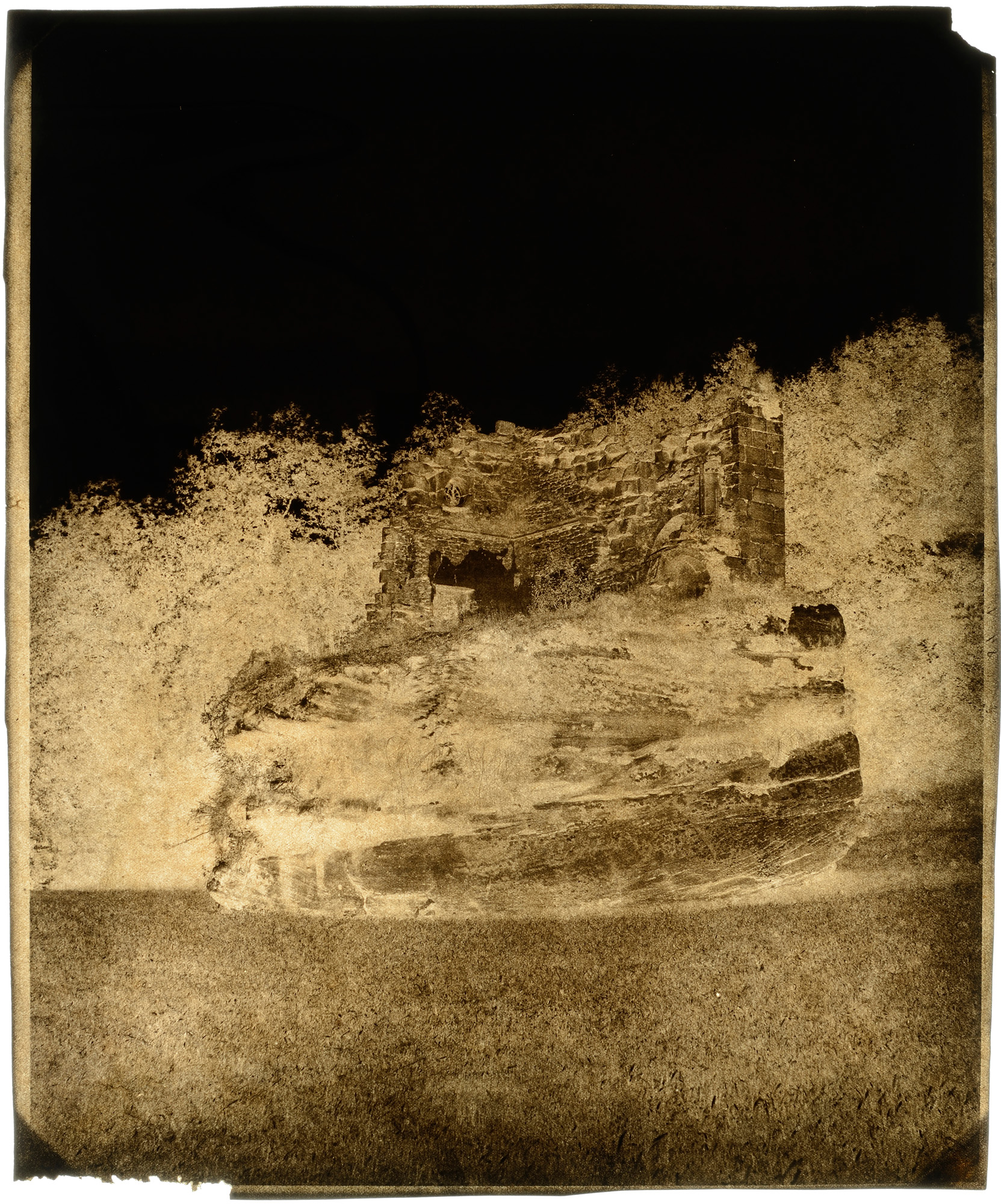About This Image
Born December 12, 1826 in Douai in the North of France, François Joseph Edouard (Fougeroux) de Campigneulles was the son of Maurice Alexandre Fougeroux de Campigneulles (age 30), an adviser to the royal court of Douai, and a writer and author of "Histoire des duels anciens et modernes" and Pauline Amélie Anicet de Gheus, (age 26). François has a sister Alix Amélie (born in 1824), but they are orphaned when Francois was only 13 years old when their mother died in 1840, and after their father had passed away four years earlier.De Campigneulles became interested in photography before traveling to the Middle East on a Grand Tour in 1853. After travelling and photographing through out the Middle East area for several years, he reportedly opened a photography studio in Cairo in 1859.From his travels throughout Egypt, to Palestine, through Sinai and to Syria, Edouard de Campigneulles brought back to France 85 calotypes, wax paper negatives, all catalogued on a list. These calotypes represent views of monuments, sites and archeological ruins. Thirty-eight photographs of this voyage were presented for the first time in Paris in 1859 at the Photographic Salon organized by the Société Française de Photographie (SFP). His work was highly praised by contemporary critics such as Charles de Linas, Ph. Burty and Louis Figuier.By the 1850s, the components of the Grand Tour in the Middle East were well established. Despite the familiarity of these sites and locations, Campigneulles’ views are those of a savvy photographer. The originality of his framing, his choice of perspective and his mastery of the execution of his calotypes hint at something above and beyond a simple photographic documentation. His photographic testimony of the Middle East poses questions about his beginnings in photography and the purpose of his trip. From whom did he learn? Did he train himself, or did he learn from another photographer? What motivated his travels? Was he another documentary photographer or a traveling amateur photographer? The photography curator for the Bibliotheque Nationale Sylvie Aubenas suggests an apprenticeship with Gustave Le Gray due in part to the technical similarities in the extreme quality in composition, the fine details of his wax paper negatives and the slight shading of his albumen prints. Millon expert Christophe Goeury also suggests the influence of the Scottish photographer James Graham, who was likewise a participant at the SFP in 1859. Sixteen albumen prints by Graham, many of which include dedications to Edouard de Campigneulles, were found in Campigneulles’ photographic collection. Similar to Graham, Campigneulles turned some calotypes and albumen prints from this voyage into panoramas, a format he continued to use after his return to Europe.Due to the modernity and the unquestionable quality of these calotypes Edward de Campigneulles should be included in the list of exceptional "primitive" photographers in the history of 19th-century French photography.To date, only the views of the Middle East have been identified. Some 22 unpublished calotypes taken in northern France show views of a village and its houses and streets, a few landscapes, local ruins, etc. The type of paper, the chemical properties and the development process of these calotypes are similar to those of the Middle East views. It could be that Campigneulles 'practiced" the use of the calotype in France before traveling to the Middle East. After his return to Europe, Campigneulles abandoned the calotype for the glass negative on his trips throughout France and Belgium.Of the 85 calotypes that Edward de Campigneulles took during his Grand Tour, 11 calotypes and five prints are known and conserved in the only two institutions that retain works by Campigneulles: the Musée d’Histoire Naturelle de Lille and the Bibliothèque Nationale de France. In the Millon auction on November 8, 2016 64 calotypes of this Middle East trip, including 31 with accompanying albumen prints, 22 calotypes of northern France and two glass negatives of France/Belgium.De Campignuelles died May 31, 1879 in Paris at the age of 52.
Most U.S. domestic Fed Ex ground shipping (Media Mail for books) is free of charge except for larger and heavier items, or unless the buyer wants express shipping (email us your requests for the latter). International shipping and insurance costs will be added to the price and must be paid for by the buyer. Pennsylvania buyers must pay appropriate local sales tax. International clients are responsible for their local customs duties and taxes, which will be charged by Fed Ex, which will contact the client prior to delivery.

Price $3,000
Ref.# 15322
Medium Waxed paper negative
Mount unmounted
Photo Date 1850s Print Date 1850s
Dimensions 12-5/8 x 10-7/16 in. (322 x 266 mm)
Photo Country France
Photographer Country
Contact
Email info@vintageworks.net
Phone +1-215-518-6962
Company
Contemporary Works / Vintage Works, Ltd.


Share This